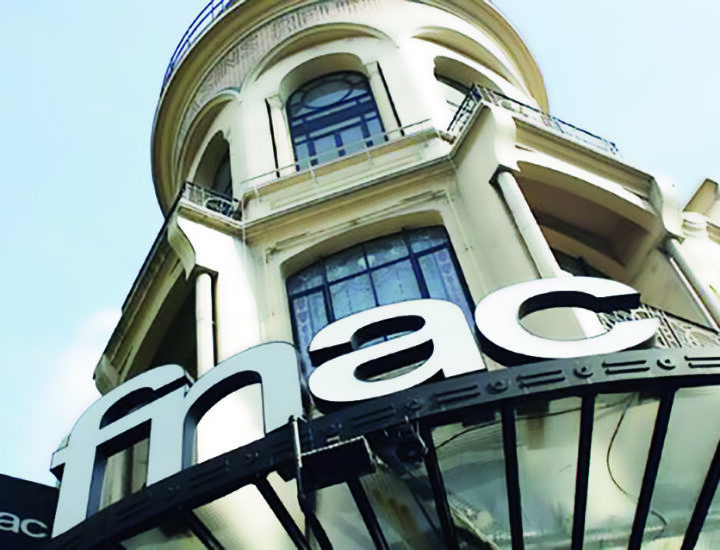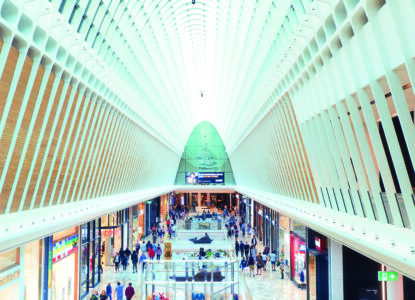
luxury conquers the no canal
Feared by luxury houses at the beginning, making most of them late adopters, the digital world is now a major and unavoidable axis of their ...
Our Expertise

Pauline Dollé-Labbé, Marketing Director at 24Sèvres, LVMH’s new luxury fashion e-commerce site, looks back for us on what counted in the success of Fnac’s digital transformation, during her notable stint from 2011 to 2017, as Marketing Manager and then Fnac Brand and Marketing Director.
Pauline Dollé-Labbé took up her position at Fnac in a context of strong changes in customer needs and renewed competition, particularly on the web. Pauline gives us her feedback on a successful digital transformation.
Pauline Dollé-Labbé : I arrived in 2011, a few months after Alexandre Bompard took over Fnac and announced the 5-year strategic plan “Fnac 2015”. Everything was built on the conviction that the consumer does not want to choose between physical and digital commerce, but rather to combine the advantages of both channels. It is this focus on multi-channel, placing the customer at the heart of its organizations and businesses, that has been the key to Fnac’s acceleration. We also had to adapt our offer, finding new ways to deal with the dematerialization of records and videos while remaining consistent with the brand. Games, toys, small electrical appliances, stationery, connected objects and above all cell phones have helped consolidate sales. In terms of stores, Fnac is increasing the number of stores and is working on its presence in the field on various fronts: classic and small formats, directly operated and franchised. An evolution of the store concept and the arrival of new service offers (equipment trade-in offer, customer training, etc.) have strengthened the richness of the customer experience. Fnac.com, a key digital asset in the digital transformation, was initially an independent entity within Fnac, an agile business unit that managed its organization, sales objectives and CRM autonomously. This independence will allow fnac.com to ensure a strong development placing fnac.com among the top leaders of e-commerce.
How did Fnac accelerate multi-channel with two separate structures?
PDL : Four major levers have enabled this successful digital transformation. First of all, major investments in logistics and IT were necessary to enable the two channels to be linked. In addition, the evolution of the organization by reintegrating fnac.com within Fnac has allowed us to de-illustrate and digitalize all of our teams, and thus begin to be truly customer centric. Secondly, by relying heavily on the human factor. Store salespeople are undoubtedly the primary vector for promoting multi-channel. By training them to guide shoppers to the site if they can’t find what they’re looking for in-store, and by attributing the sale figure to them as if the customer had helped themselves to their department, as well as sales ordered online and picked up at the point of sale, store teams have fully embraced the multi-channel trend. More broadly, within the entire company, “digital evangelization” has been the subject of particular attention to allow the change to take hold in a healthy and sustainable way and to get the internal teams on board. And finally, by rethinking our market-com investments and reworking the allocation of our resources. We have made a radical shift in terms of budgets. Previously, our marketing budgets were mainly focused on in-store communication (ads, brochures, boxes, point-of-sale events, etc.). At the time, the stakes were less traffic than in-store conversion. With the increased competition from web players such as Amazon and the digital transformation project, we have, for example, divided the instore communication budget by four, to the benefit of these multi-channel traffic issues (web & stores). The same goes for media budgets, which in 2017 became more important online than offline, which was not at all the case before the transformation plan.

Pauline Dollé-Labbé, marketing director at 24Sèvres
« the consumer does not want to choose between physical and digital commerce but rather to combine the advantages of both channels »
Acceleration, transformation, digital, all departments of the company seem concerned by such changes?
PDL : Indeed, this digital transformation has also been reflected in our HR teams. We have recruited data and digital oriented profiles with a high degree of agility. We have even integrated new skills: in-situ graphic designers to ensure real-time production to be displayed in stores on screens and on the web to meet commercial challenges and time-to-market requirements. For example, we have modified the design of the CAP (commercial action plan) with an annual projection of our campaigns but also of the slots and budgets available to respond day-to-day to the commercial pressures of our competitors and the needs of our customers and members. We also needed to adapt our internal operating procedures but also with our partners. For example, we have discussed with our main agency a “drawer” operating scheme by pre-working levers per point of contact to be activated according to customer and market needs vs. the traditional annual flat fee scheme.
We also had to train our service providers to support us in this necessary responsiveness. Some of our suppliers had less pressure from the market and digital reality, and could sometimes move slower than us. Of course, Fnac’s digital transformation also involves our partners, who are key players in this transformation. And I also salute their work and their presence that allowed us to succeed in this transformation.
What are the challenges for the future of FnacDarty?
PDL : The organization’s ability to transform itself was amazing and the FnacDarty teams extraordinarily efficient. I was very positively surprised to see that, despite more than 60 years of existence, Fnac has always had the agility to maintain the responsiveness and mobilization of its teams in this context of total change. Continuing to work on the customer experience is one of the challenges facing Fnac in the new FnacDarty group. Even if the market is evolving with the digital transformation, it is more than ever essential that the customer continues to feel identified, welcomed and recognized at each point of contact with the brand, whether on the web, in stores, in CRM… One of Fnac’s major assets in this area is its powerful loyalty program, which enables cross-channel data reconciliation. Combined with Darty’s historical strength in services, FnacDarty benefits from unparalleled customer knowledge, which is essential for offering a seamless omnichannel experience. The excellence of the multi-channel experience and customer obsession will be the key to success. The recent deployment by FnacDarty of a D+1 delivery service including assembly and start-up of the equipment at home is a very good example!

Feared by luxury houses at the beginning, making most of them late adopters, the digital world is now a major and unavoidable axis of their ...

Scanning a barcode to know the composition of a product, reading other customers before choosing a restaurant, or comparing airfare prices, ...

From Christie’s sale of a piece of digital art for $69 million, to Jack Dorsey’s (co-founder of the Twitter platform) first twee...